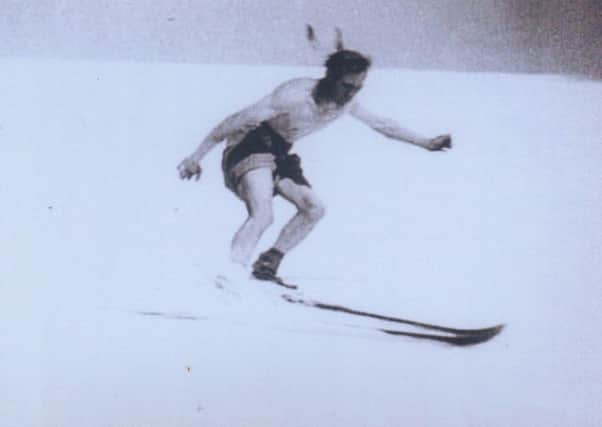Early days of Scottish skiing remembered in Ashie Brebner's new book, Beyond the Secret Howff


Brebner was born in 1935 and grew up in a tenement in a working class area of Aberdeen, close to Pittodrie Stadium. During the 50s and 60s he and his friends Jim Robertson, Charlie Smith, Doug Mollison, Jack Doverty and Jack Innes began to explore the Eastern Cairngorms together, and it didn’t take them long to realise the area’s enormous ski mountaineering potential.
Before the Second World War, Brebner explains, skiing was something that only the middle classes could afford to do, but once the war was over “large quantities of equipment produced in preparation for winter warfare” became available and “it was now possible for the working class to buy an excellent rubber-lined frame rucksack for about 2/6 (25p), an ice axe of variable quality for about the same and a pair of skis for about £2.10 (£2.50).
Advertisement
Hide AdAdvertisement
Hide Ad“As an apprentice mechanic,” he continues, “I was earning something like £1.8.6 per week, (less than £1.50)... [but] nevertheless, skiing was within reach.”
Brebner and co didn’t have anyone to teach them how to ski, so they taught themselves by studying illustrations and descriptions in books and by “watching each other and deciding where and when the weight should be at a particular place on the turn.” Predictably, perhaps, their early forays into the hills were not without incident. On Hogmanay of 1951, during an attempt to climb Creag an Lochain and follow the ridge along to Carn Creagach, finishing with a long downhill run to Altanour Lodge, Brebner, Robertson, Smith and Mollison, along with Johnny Vigroe, found themselves suddenly caught up in a ferocious snow storm. (As Brebner points out, “this was in the days before transistors made it possible to carry a small radio for forecasts”.) Disoriented by the blizzard, they were pushed off the ridge by the wind and ended up on the headwall of the burn which comes off Carn Creagach – a slope “which earlier freeze and thaw conditions had converted to solid ice.”
Mollison decided to try taking his skis off so he could negotiate the ice on foot, but “almost immediately the wind caught him, spun him around and he was off at high speed down the steep gully and out of sight.”
After getting themselves to safety by taking a circuitous route down off the hill, Brebner and the others were relieved to discover Mollison toasting his feet by the fire at Altanour Lodge later that day, although he had to spend most of the following weekend searching for his skis.
Even today, lugging ski gear into the hills is a pain, but this was even more the case for Brebner’s generation, when the correct length of ski for your height was “for the upright ski to reach the palm of your hand held vertically above your head.” In a bid to make things a little easier for themselves, in the autumn and winter of 1952 and the spring of 1953, Brebner and his friends successfully constructed the shelter that became known as the now-legendary Secret Howff somewhere in the vicinity of Beinn a’ Bhùird. As its name suggests, the precise location of the howff is not to be disclosed, and Brebner doesn’t offer many clues here. He does, however, offer a highly entertaining account of how it came to be built – complete with elaborate attempts to evade detection by operatives of the local estate, who had already dismantled a previous shelter.
This book represents a significant piece of Scottish mountain heritage, then, but it’s also a joy to read, thanks partly to the small, clearly-remembered details that stud the text. My favourite is the account of how Brebner and his friends once made the arduous final leg of a long ski tour a little less arduous by leaving a cache of beer bottles cooling under the snow near the end – a bit of wisdom well worth passing on.
Beyond the Secret Howff by Ashie Brebner is published by Luath, £9.99